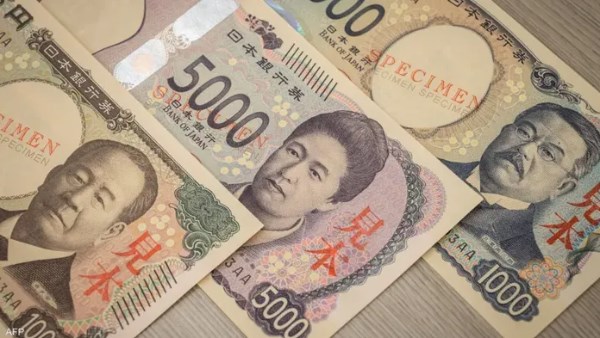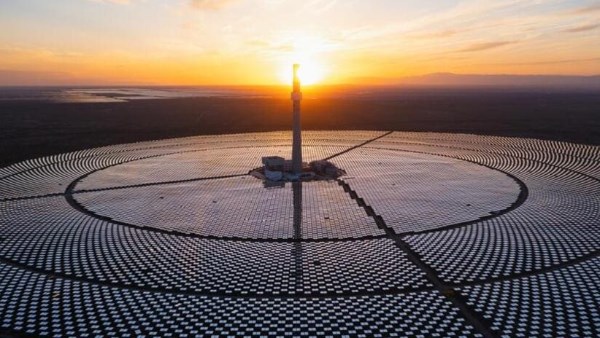
China's economic miracle to re-improve، reaching 5.9% next year through to 2030

China likely grew 5% or so this year and is expected to grow 5.9% through to 2030، outrunning the global economy as the Chinese government invests more than 40% of its output، twice as much as the United States، suggesting a significant portion of that is unproductive bur it can get its potential economic miracle growth back on track in 2024 thsnks to made in China 2025 strategic plan that was initiated in 2015 to reduce China's dependence on foreign technology and promote Chinese technological manufacturers in the global marketplace.

China's government has set a target to grow around 5%
The China's government has set a target of around 5% as the world's second-largest economy will also cultivate new consumption growth areas such as smart homes، recreation and tourism and sports events، however، China's disappointing post-COVID recovery has raised significant doubts about the foundations of its decades of stunning growth and presented Beijing with a tough choice for 2024 and beyond: take on more debt or grow less.

The expectations were that once China ditched its draconian COVID rules، consumers would burst back into malls، foreign investment would resume، factories would rev up and land auctions and home sales stabilize، instead، Chinese shoppers are saving for rainy days، foreign firms pulled money out، manufacturers face waning demand from the West، local government finances wobbled، and property developers defaulted.

Doubts about China's growth model
The dashed expectations have partly vindicated those who always doubted China's growth model، with some economists even drawing parallels with Japan's bubble before its lost decades of stagnation starting in the 1990s، that the economists now predict China's GDP growth to be 3.5% in 2030 and close to 1% by 2050، lower than previous projections، while the US economy is showing signs of strength، with a strong labor market and robust consumer spending

China sceptics argue Beijing failed to shift the economy from construction-led development to consumption-driven growth a decade ago، when it should have done so snd since then، debt has outpaced the economy، reaching levels that local governments and real estate firms now struggle to service but the policymakers vowed this year to boost consumption، and reduce the economy's reliance on property as well as Beijing is guiding banks to lend more to high-end manufacturing، away from real estate
A concrete long-term roadmap for cleaning up debt and restructuring the economy
But a concrete long-term roadmap for cleaning up debt and restructuring the economy remains elusive، while، whatever choices China makes، it will have to account for an ageing and shrinking population، and a difficult geopolitical environment as the West grows wary of doing business with the world's No.2 economy.

Therfore، many Chinese don't feel that growth as youth unemployment topped 21% in June، the last set of figures before China controversially stopped reporting and university graduates who studied for advanced-economy jobs are now taking up low-skilled positions to make ends meet while others have seen their wages cut.
In China economy: 70% of household wealth is parked in property
In China economy where 70% of household wealth is parked in property، home owners are feeling poorer، even in one of the few bright spots of the economy، the electric vehicle sector، a price war is causing pain downstream for suppliers and workers.

The national pessimism in Beijing could present President Xi Jinping with social stability risks، but if China does slip into a Japan-style decline، it would do so before ever achieving the kind of development Japan did، and that would be felt widely as most global industries depend significantly on suppliers in China، especilly Africa and Latin America count on China buying their commodities and financing their industrialisation.
China's problems to make some tough choices
China's problems give it little time before it has to make some tough choices and policymakers are keen to change the structure of the economy، but reform has always been difficult in China and a push to boost welfare for hundreds of millions of rural migrant workers، who could - by some estimates - add 1.7% of GDP in household consumption if they had similar access to public services as urban residents، is already stalling due to worries about social stability and costs.

China's efforts to resolve its property and debt problems come up against similar concerns as economists wander: who pays for their bad investments? Banks، state-owned firms، the central government، businesses or households? any of those options could mean weaker future growth، however، China appears hesitant to make choices that would sacrifice growth for reform bit the government advisers are calling for a growth target of around 5% for next year.
The growth target needs more debt
Such a target might push it into more debt، the type of fiscal looseness that prompted Moody's to cut China's credit rating outlook to negative this month، pushing Chinese stocks to five-year lows and where that money gets spent will tell us if Beijing is changing its approach or doubling down a growth model many fear has run its course.

The key of China's economic work in the coming years will be maintaining stable growth. In order to reach the goal of achieving all-round modernization by 2035، China should secure average yearly GDP growth rate of 4.6 percent. However، China's economic growth rate could likely slide to below 4.6 percent within three years if due reforms are not carried out، therefore، striving for long-term stable growth should be the focus of future economic work.
China needs to provide more fiscal help to average consumers to heat up the economy
China needs to provide more fiscal help to average consumers to heat up the economy، but the country should no longer be wedded to the traditional way of boosting infrastructure as there is no longer such ample room for investment in this area، therefore، new approaches should be introduced to maintain the confidence of consumers.

If the reform measures are put in place promptly، the potential growth rate of the Chinese economy in the decade from 2020 to 2030 will rise to % 5.9 and China's current low inflation shows that the economy has not yet reached its potential growth rate، so it is expected in the next 10 years، that China's potential economic growth rate to reach % 4.9 if the reforms are successfully implemented and in order for the Chinese economy to maintain long-term growth، the government and the market must work in tandem.





-1120252475029447.jpg)
-920252122624392.jpg)
















